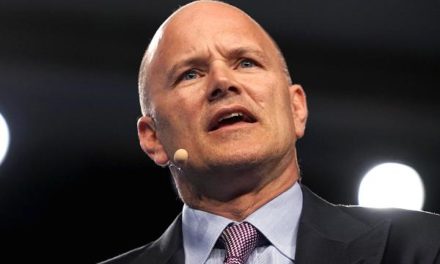Martin Armstrong’s European Union (EU) will break apart when Quantitative easing (QE) stops view might sound extreme, maybe even ridiculous to the Europhiles (those who admire Europe and are in-favor of the EU).
So then just how realistic is Martin Armstrong’s “EU will break apart when QE stops”?


“Just how realistic is Martin Armstrong’s view that the EU will break apart when QE stops?”
Italy could be the EU’s wildcard
The populist Italian government recently contacted the European Central Bank (ECB) to discuss its continuing debt crisis. Liquidity for Italian sovereign bonds is drying up in the wake of Italy’s new populist government. Investment for Italian sovereign bonds has fallen.
Investors have been spooked by Italy’s new government which they view as being less predictable and risky.
As investors exit Italian sovereign bonds their price falls which sends their corresponding yields higher.
So the crux of Martin Armstrong’s European Union (EU) will break apart when Quantitative easing (QE) stops is based on the fact that the ECB is the buyer of last resort. In other words, ECB steps into the market with more liquidity, continues to buy bonds (which defines QE) during a period when private investors are withdrawing from the market.

“The populist Italian government recently contacted the European Central Bank (ECB) to discuss its continuing debt crisis”
Martin Armstrong’s European Union (EU) will break apart when Quantitative easing (QE) stops is based on European periphery bond yields, particularly Italian reaching a breaking point and bankrupting governments.
So let’s look under the bonnet at the mechanics of this view.
The bond market is indicating that the Italian government debt is now riskier and that investors want higher yields to compensate for this new risk environment.
So investor demand for Italian bonds falls which also increased the corresponding yields of Italian bonds, bearing in mind that there is an inverse relationship between bond price and their yields.
But as Italian yields rise that also increase the cost for the Italian government to service its ballooning public deficit.
The breaking point (sovereign debt default) comes when bond yields rise to a level where the Italian government can no longer make or honor its bond yields payments to its creditors.
In other words, the ECB keeps bond yields serviceable (manageable) by carrying out QE.
“Italy Warn that Stopping QE will Lead to Collapse of Eurozone Italy has called on the ECB to guarantee the bond yields warning that if they END quantitative easing the Eurozone will break apart” – Elizabeth Burke
Martin Armstrong’s European Union (EU) will break apart when Quantitative easing (QE) stops is based on an EU member country defaulting on its interest payments to bond investors.
The spotlight has now moved to Italy.
“Italy Warn that Stopping QE will Lead to Collapse of Eurozone Italy has called on the ECB to guarantee the bond yields warning that if they END quantitative easing the Eurozone will break apart”, tweeted Elizabeth Burke an investor/Lawyer/Former TV presenter Family Office focusing on global macro & taxation
So Martin Armstrong’s European Union (EU) will break apart when Quantitative easing (QE) stops view could hold water. Unsustainable debt levels of periphery countries combined with rising bond yields could trigger another European sovereign debt crisis.
Would the EU politically survive another round of imposed austerity and budget constraints on their member countries? Maybe not. But equally, if the ECB implements a policy of QE to infinity that would debase the euro even further, thereby causing a crisis of confidence in the single bloc currency. Hence Jacob Rothchild’s words of caution.
So the ECB could be stuck between a rock and a hard place.















